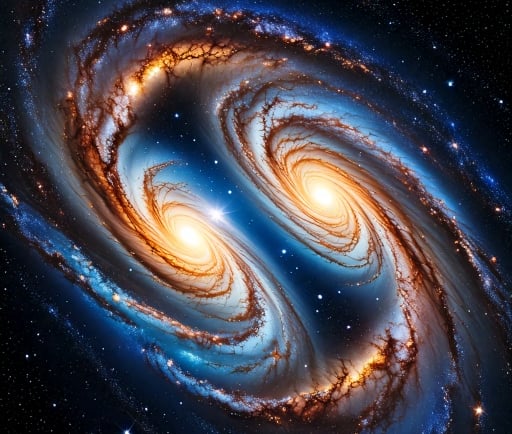The Awe-Inspiring Duality of Spiral Galaxies


The Beauty of Spiral Galaxies
Spiral galaxies are one of the most visually stunning structures in the universe. Their intricate arms, composed of bright stars, gas, and dust, create a magnificent display of cosmic artistry. These galaxies are often recognized for their pinwheel shape, which results from the gravitational forces acting on their massive bodies. The duality of spiral galaxy stars plays a significant role in understanding the dynamics and evolution of these celestial beauties.
Understanding Dual Star Systems
Within spiral galaxies, many stars exist in binary systems, where two stars orbit around a common center of mass. This duality of stars profoundly impacts stellar evolution, as the gravitational relationship between them affects their life cycles. When one of these stars reaches the end of its life, the dramatic events that unfold can lead to the creation of supernovae or neutron stars, enriching the surrounding interstellar medium with heavy elements.
The Role of Dual Stars in Galaxy Formation
The presence of dual star systems is essential for the evolutionary processes within spiral galaxies. As these stars interact, they can transfer mass, influencing their brightness and lifetimes. This interaction also leads to an increase in the temperature and pressure of the core regions, potentially triggering the formation of new stars in the process. This fascinating dynamic illustrates how the duality of spiral galaxy stars not only enhances our understanding of individual stellar systems but also contributes to the overall structure of the galaxy.
Moreover, the study of these dual star systems provides us with invaluable insights into the formation history of spiral galaxies. By examining their distances, ages, and compositions, astronomers can gain a clearer picture of the complex processes that have shaped our universe. Understanding the dual nature of stars within these galaxies offers a gateway into the intricate web of cosmic evolution, where every star has its role to play.
